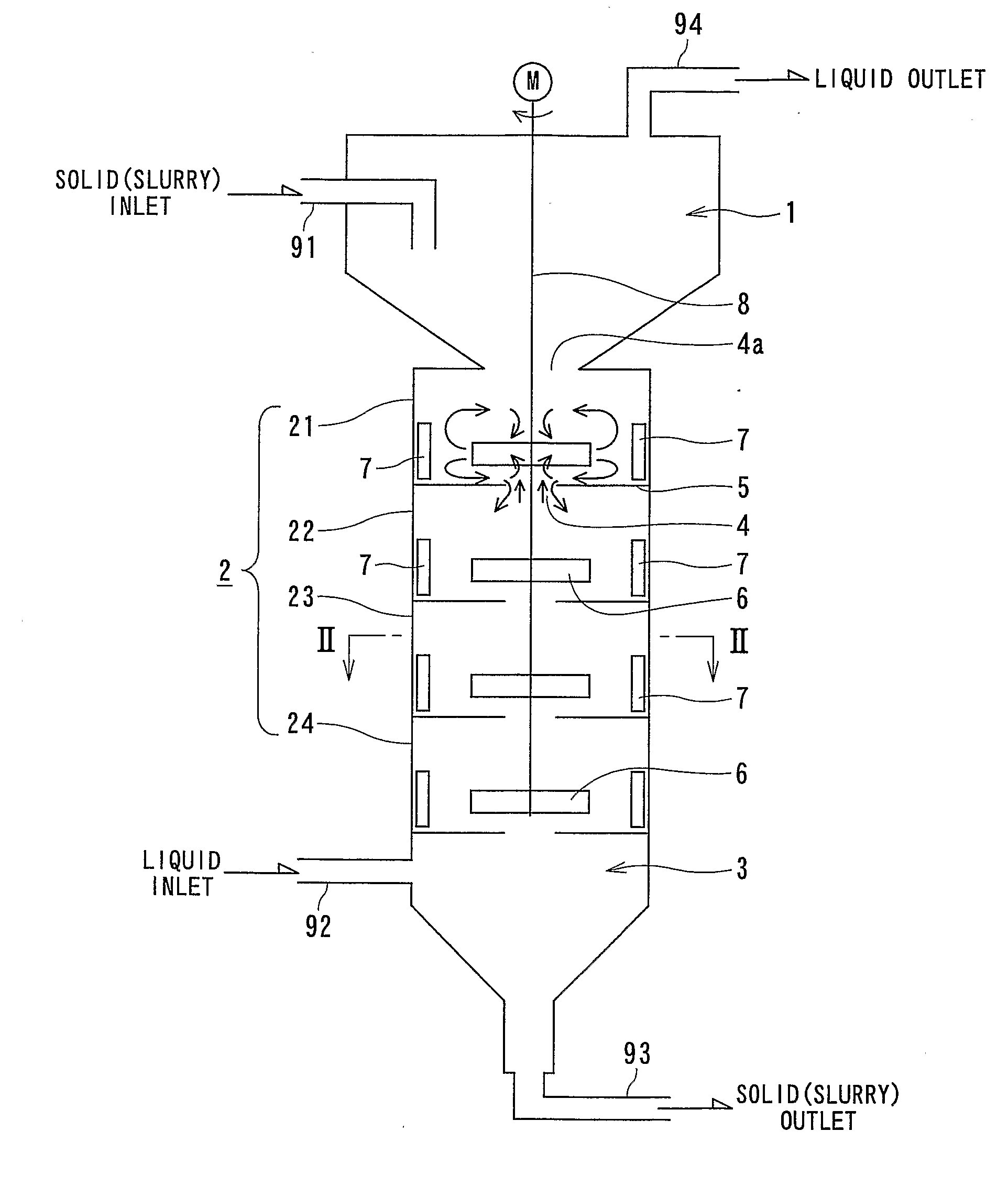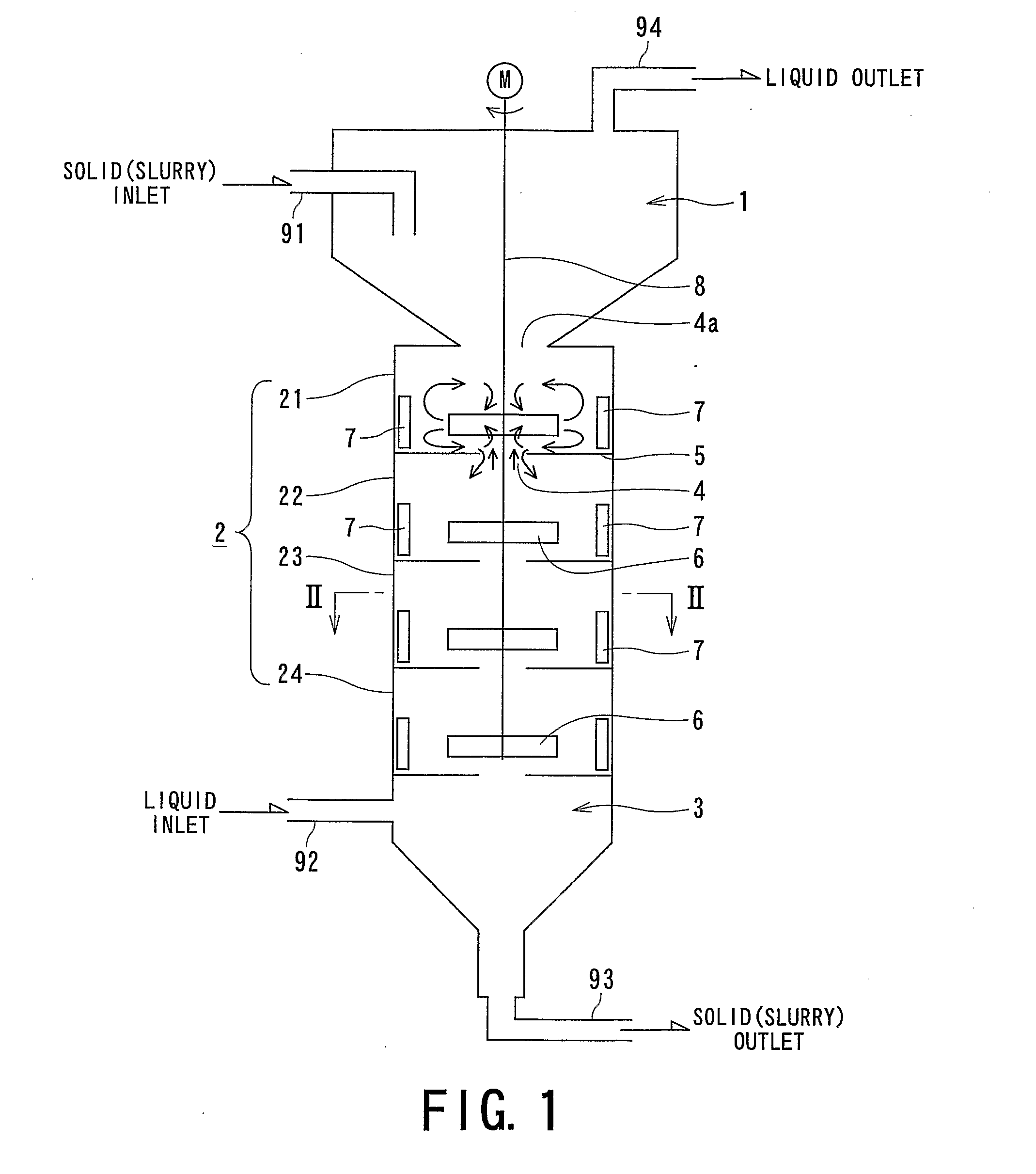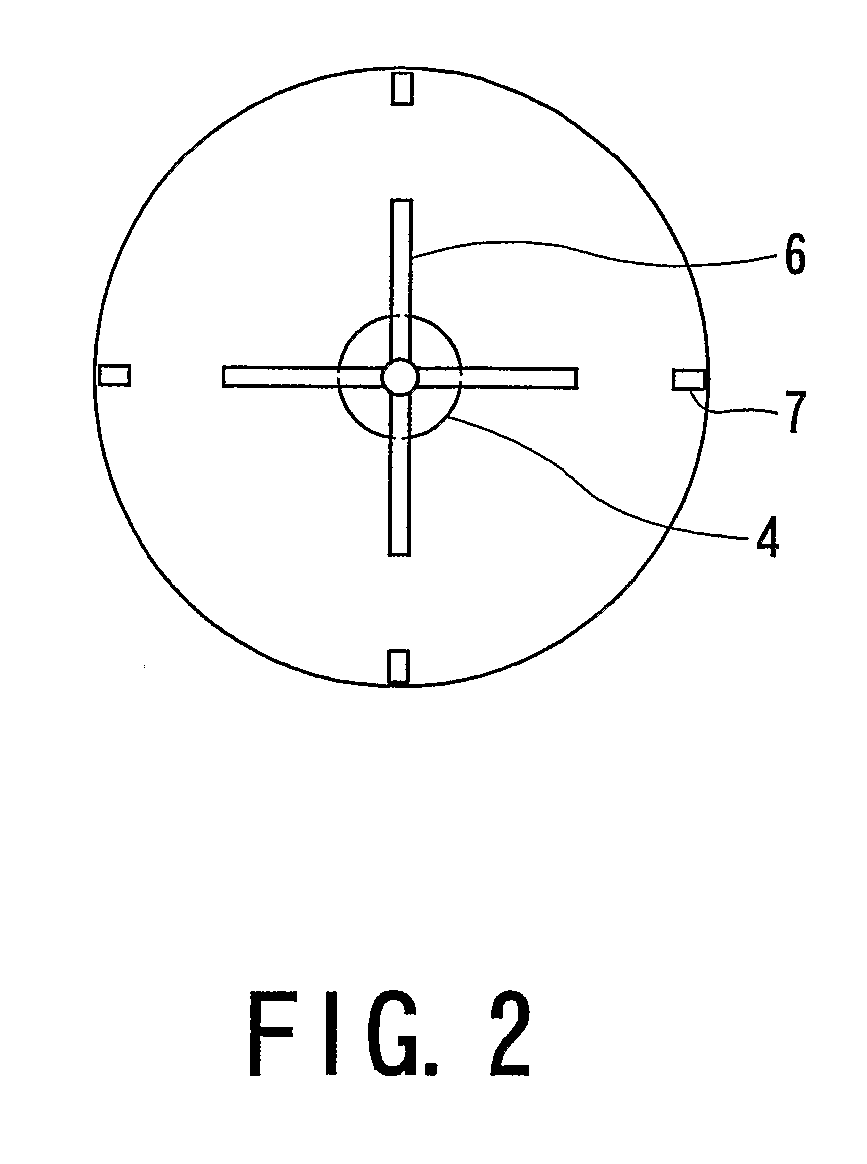Apparatus and Method for Solid-Liquid Contact
a technology of solid-liquid contact and apparatus, which is applied in the direction of transportation and packaging, rotary stirring mixers, chemical/physical/physicochemical processes, etc., can solve the problems of deteriorating contact efficiency, difficult to achieve good compatibility between them, and inability to provide good contact efficiency as expected, so as to improve improve the rectification region. , the effect of improving the solid-liquid contact efficiency
- Summary
- Abstract
- Description
- Claims
- Application Information
AI Technical Summary
Benefits of technology
Problems solved by technology
Method used
Image
Examples
example 1
[0061] In a solid-liquid contact apparatus having an organization shown in FIG. 1 (and FIG. 2), a PPS (polyphenylene sulfide) slurry was supplied at a rate of 25 kg / h through a pipe 91 and water was supplied as a washing liquid at a rate of 37.5 kg / h from the pipe 92 to effect a continuous solid-liquid contact treatment. The treatment flow rate or load of the apparatus was 62.5 kg / h as a total of the slurry and water supply rates. The PPS slurry contained 5 kg / h of PPS particles (on a dry basis), 16 kg / h of water and 4 kg / h of acetone, so that the liquid excluding the PPS particles in the slurry contained 20 wt. % of acetone (acetone concentration in the slurry of 16 wt. %) and the concentration of the PPS particles in the slurry was 20 wt %. Further, a washing bath ratio L / P determined as a ratio of the washing liquid to the PPS particles in the slurry was 7.5 (=37.5 / (25×0.2).
[0062] The apparatus had 4 stirring chambers 21-24 which were made of an acrylic resin sheet and allowed s...
reference example 1
[0085] While the stirring conditions and the washing bath ratio (L / P=7.5) of Example 1 were retained, the treatment load (as a total of the slurry supply rate to the pipe 91 and the water supply rate to the pipe 92) was reduced down to 37.5 kg / h (3 kg / h as PPS particles). As a result, the outlet acetone concentration was 0.60 wt. % and the average stirring Reynolds number Re in the apparatus was 6.82×103. The treatment load of 37.5 kg / h corresponds to 57% of the maximum load.
reference example 2
[0086] In Reference Example 1, the blade rotation speed was reduced down to 4 rpm, which corresponded to an average stirring Reynolds number Re in the apparatus of 1.37×102. Under the stirring condition and while retaining the washing bath ratio (L / P=7.5), the treatment load (as a total of the slurry supply rate to the pipe 91 and the water supply rate to the pipe 92) was set at 37.5 kg / h (3 kg / h as the PPS particles). As a result, the outlet acetone concentration was 1.40 wt. %.
[0087] Incidentally, in the above apparatus, the slurry supply rate to the pipe 91 and water supply rate to the pipe 92 were gradually increased, while retaining the washing bath ratio L / P=7.5, up to a treatment load (as a total of the slurry and water supply rates) of 40 kg / h, when the slurry discharge rate from the pipe 93 was not increased any more but stagnation of solid in the stirring chambers was observed in response to a further increase of the supply rates, so that 40 kg / h was taken as the maximum ...
PUM
| Property | Measurement | Unit |
|---|---|---|
| viscosity | aaaaa | aaaaa |
| viscosity | aaaaa | aaaaa |
| inner diameter | aaaaa | aaaaa |
Abstract
Description
Claims
Application Information
 Login to View More
Login to View More - R&D
- Intellectual Property
- Life Sciences
- Materials
- Tech Scout
- Unparalleled Data Quality
- Higher Quality Content
- 60% Fewer Hallucinations
Browse by: Latest US Patents, China's latest patents, Technical Efficacy Thesaurus, Application Domain, Technology Topic, Popular Technical Reports.
© 2025 PatSnap. All rights reserved.Legal|Privacy policy|Modern Slavery Act Transparency Statement|Sitemap|About US| Contact US: help@patsnap.com



